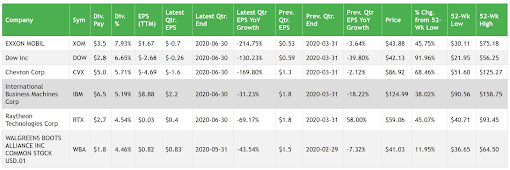Oracle (ORCL) faced its first real challenge to its business model from Amazon AWS (AMZN). For a long time, Oracle's relational database has been the standard for many companies in the Global 2000. Oracle's database is still so entrenched in many corporations across the globe that they pay millions of dollars in Oracle license and support fees each year to keep the right to use their software. But, companies formed in the last 10-15 years have shunned the Oracle database. Instead, they have relied on myriad open-source database options and cheaper databases from other companies. The advent of AWS made it easy for any company to manage databases in the cloud.
Oracle has lagged behind the prominent three cloud vendors in offering infrastructure-as-a-service (IaaS). The company has a reasonably significant market share position in SaaS software, where it competes against the likes of Salesforce (CRM), Workday (WDAY), and SAP (SAP). But, Oracle is still heavily dependent on revenue from its database software. Since Oracle cannot attract new customers to its database, it has resorted to using its existing database install base as an annuity business. In essence, the Oracle database software generates much rental income from its remaining customers.
In the face of Oracle management's inability to innovate and compete, they have resorted to financial engineering to prop up their share price. A company innovating and competing well in the marketplace is most likely growing revenues. At the very least, revenue growth needs to keep up with GDP growth. Unfortunately, there is no revenue growth at Oracle. In the fiscal year ending May 31, 2011, Oracle had total sales of $35.622 billion. In the fiscal year ending May 31, 2021, Oracle had total sales of $40.479 billion. That equates to a 13.6% growth in revenue over 11 years. The 13.6% rate amounts to a compound annual growth rate (CAGR) of 1.16%.
Exhibit: Oracle Annual Sales Revenue from Fiscal Year Ending on May 31, 2011
How does a company show earnings per share (EPS) growth when revenue growth is nonexistent? Investors react positively to a growing EPS number. One way to show an ever-increasing EPS number is to repurchase the company shares and retire them. The repurchase transaction reduces the outstanding shares, and thus when stagnant net income is divided by outstanding shares, the resulting EPS number looks as if it is growing.
The company has spent billions of dollars each year repurchasing its stock. The company has spent $137.65 billion in repurchasing its shares in 11 years. Initially, the share repurchases did not do much to the stock price. So, in recent years, the company has gotten even more brazen in buying back its stocks (See Exhibit: Annual Amount in Billions Spent by Oracle on Share Repurchase).
Exhibit: Annual Amount in Billions Spent by Oracle on Share Repurchase


































